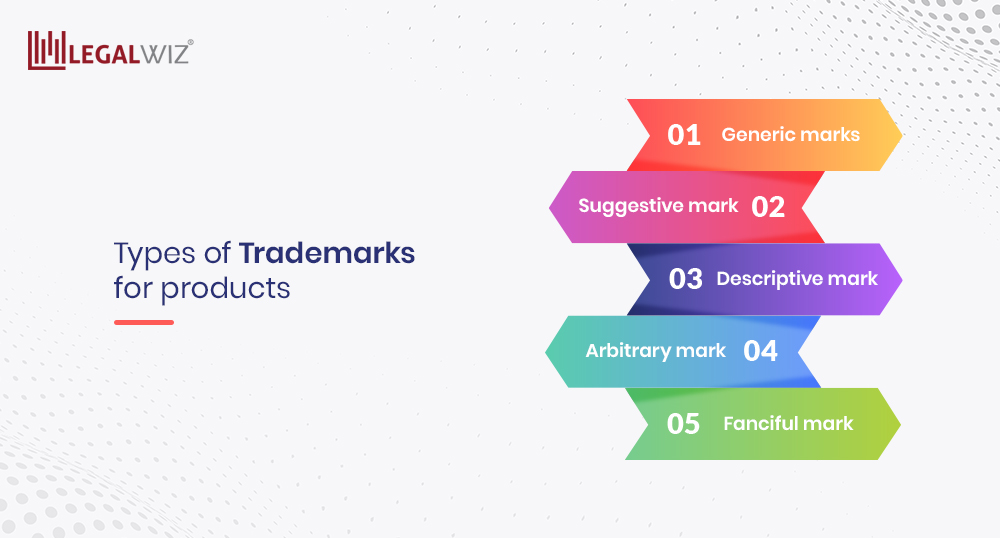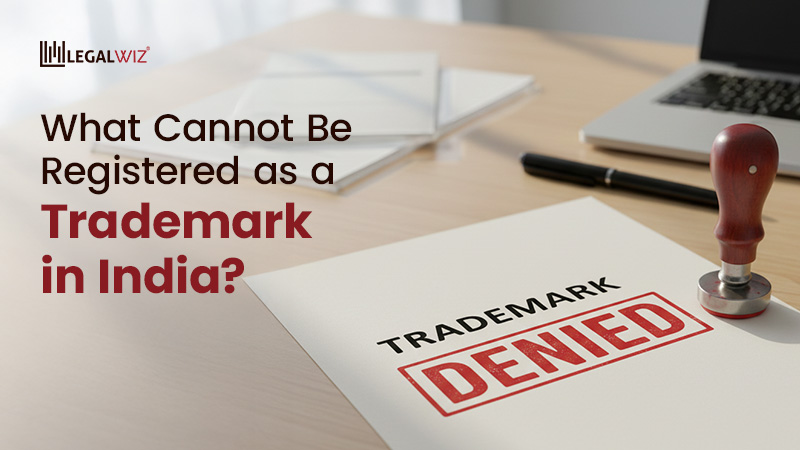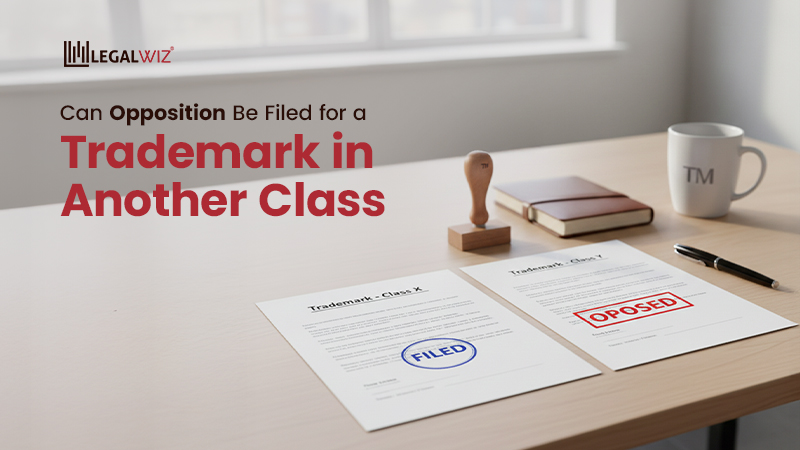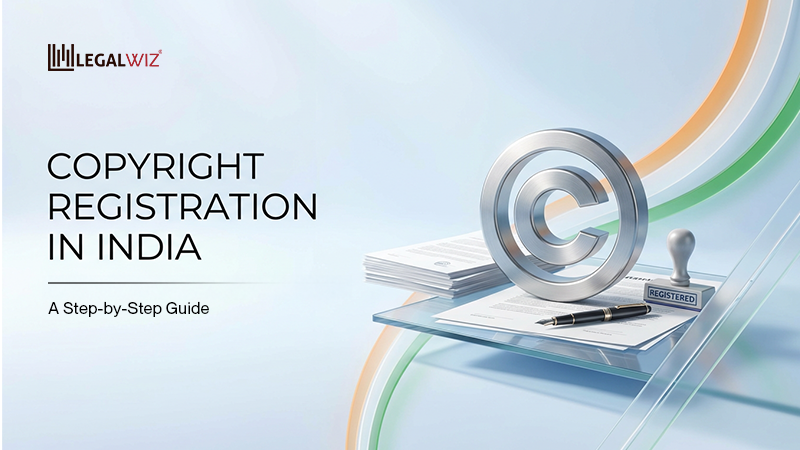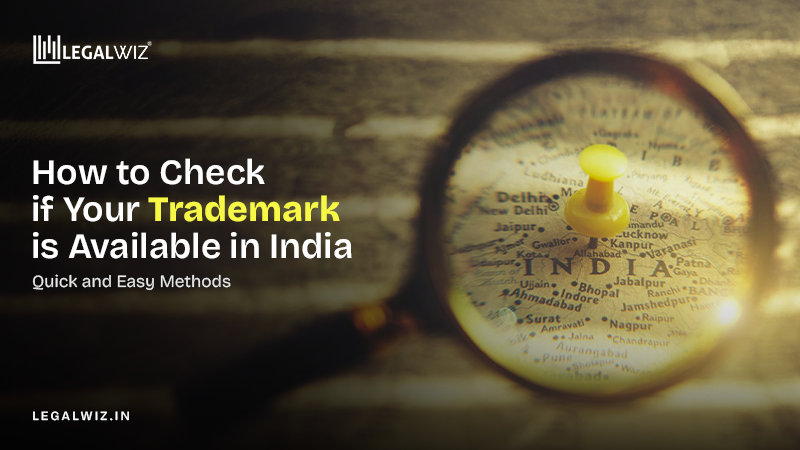Different types of trademarks in India
A trademark is a combination of letters, a unique logo, shape, label or any other combination which is capable of graphical representation. Trademark is an intellectual property right that helps the unique creations of mind. The various types of trademarks especially protect the marks that businesses use in the course of trade. There are many different types of trademarks in India such as word marks, logos, slogans and more that help in protecting a brand identity collectively. As Brand Name registration gets more and more popular with time, we’re here to help you get the hang of all the different types of trademarks in India that will help you as a creative and a business owner.
What are the different types of trademarks in India?
There are a lot of different types of trademark in India over which you can seek business or brand protection. The broad category of various types is based on conventional and unconventional types of trademark. Let’s delve into all:
Wordmark
During the trademark registration process, you can either choose to submit a word mark or a device mark. The word marks are the combination of letters, words or numerals. So, from all different types of trademarks in India, a trademark filed as a word without any stylization or extra design elements is a word mark. Moreover, a word mark gives a broad range of protection to its owner. Some examples of word marks are Nestle; Tata; Google; Reliance etc.
Also Read: How to Register a Brand Name in India
Devicemark
The device mark is a graphical representation of any brand. It is one of the various types of trademarks in India that should be appealing in nature and must consist of artistic element/s. A trademark along with the design elements in it can be a device mark or a brand name consisting of artistic elements without any trademark can be denoted as a device mark as well. The trademark registry of India gives protection to the whole mark collectively rather than the individual elements in it.
Series mark
If a company is dealing in different kinds of goods and services and wishes to recognize itself through common identifying letters, characters, or words then it can have a series mark from the various types of trademark. A series trademark consists of a common prefix or suffix that has a resemblance to other product names of the same business. It is also popular as the ‘family of marks’. This type of trademark is usually popular amongst established businesses with multiple brands.
For example: Nike Air; Nike Air Vapormax; Nike fit; Nike Metcon; Nike Shox; Nike Stabiflex in the ownership of Nike Innovate C.V.
Also Check: Can you run multiple brands in a single business?
Certification marks
Out of the various types of trademarks, certification marks define the standards of a product. Certification marks give an assurance to customers of any brand that the product fulfills the relevant quality standards. These marks generally certify different characteristics of a product and its origin.
An example of certification marks in India is the Bureau of Indian Standards (BIS) Hallmark, which is the standard of purity for gold and silver jewelry in India. Another example can be the Indian Standards Institution (ISI) mark that certified different kinds of industrial products for quality.
Also Read: Documents Required for Trademark Registration
Collective mark
This trademark generally belongs to a group of people. Collective trademarks are in the ownership of an organization or an association. So, the members of the organnization can collectively use the marks.
Some common examples of collective marks are the symbol of Bar Council of India (BCI); or the mark of Chartered Accountants (CA). Legal professionals or members of the BCI get access to common logo of BCI on their unique identity cards issued by the Bar Council of India.
Product mark
Certain companies and products opt to register their products as a whole, if they are that distinguishable. Product trademarks may include a brand name, logo, slogan, or even packaging materials. Moreover, since these are not services related, only classes 1 to 34 of trademark may be applicable for this from different types of trademark in India. Besides, this trademark class search tool helps in identifying the appropriate class for product mark.
Service mark
Contrary to the product mark, these various types of trademarks represent services given by a service provider. So, for a service mark any of the classes from trademark class 35 to 45 are applicable. It is also a very common types of trademark in India. Lastly, these marks help in identifying the source of services.
Shape mark
Another famous type of trademark is a shape mark. This mark protects the unique and distinctive shapes associated with a product or a business. For example, the unique bottle of coca cola is also a trademark.
Pattern mark
Nowadays, packaging materials for brands also have unique patterns and designs. This can also be open to trademark protection.
Color trademark
Many brands get a trademark for their color scheme after getting popular. Common examples include Mcdonalds, Cadbury, and more.
Also Read: Can I tradeamark my hashtag?
Other various types of trademark
You can choose trademark for any product of any category. It is important to know what can be a trademark. Any mark that distinguishes the business activity of one person from another, is capable of graphical representation, can easily be a trademark. Following is the list of various types of trademark in India –
Name
The name can be further categorized as a product name, business name, name of any individual or surname. But such a name must be used for any business, trading or service. It can be in any specific text, color, and style. Also Read: When and why should you trademark your Name?
Many companies take trademark registration for the name of their products. For Example, ‘Cadbury Temptations’, ‘Cadbury Gems’, ‘Cadbury perk’, and ‘Cadbury’s Crackle’ among others.
Business name
A business name can be a company’s official name through which people recognise a business. Trademarking a business name is getting legal protection for the name or identity of the business.
Product name
A business name identifies a business organization while a trademark is a property. If you use a trademarked business name of someone, it is rightfully in violation of the trademark owner’s right. A trademark can be taken in the name of the business or company. For example ‘Mcdonald’s’, ‘Parle’, ‘Reliance Shoppe’, ‘Reliance Power’, ‘MamaEarth’.
Name of a person
A person’s name can also be trademarked if such a name becomes a source of earning or if such a person allows the use of their name by someone else. In this case, the applicant has to provide a No Objection Certificate (NOC) from the person whose name is to be used. The NOC is a document wherein an individual provides written consent to use their name. These types of trademarks are very common for celebrities. For example Salman Khan Ventures, and Shah Rukh Khan. The examples referred to here are owned by the celebrities themselves.
Also Read: Trademark Jursidiction and Registry in India
Surnames
Running a business in the family name is common in India. Trademarks on surnames on which business is carried on can be taken. For example Tata, Mahindra, BAJAJ. However, the trademark registry may not allow trademark registration on very common surnames. The trademark registration of surnames is based on the discretion and full satisfaction of the Trademark Registry.
Abbreviations or numbers as a trademark
One can have a trademark on letters, abbreviations, or a combination which are used for business and which is able to distinguish the goods or services offered by one person from another’s. For example “555”, “777”, “IBM”, “BMW”.
Logo or symbols
If you have a specific logo for your brand or product or service, then such logo can be filed for trademark registration at the trademark registry. It is also known as a “Device”. It must be unique. Such symbols create their own identity and there is no need to describe them with their brand name.
Tagline
The tagline is a slogan used to define the thought behind the product or service. Hence, many businesses have a tagline for their products or services. It adds a dramatic effect. As they are simple and catchy, people recognise them easily. It is a representation of the brand and hence it can be filed for trademark registration. Examples of registered taglines can be L’Oreal’s Because I’m Worth it; Nike’s Just Do it; Amul’s The Taste Of India; LG’s Life’s Good.
Also Read: When should you trademark a slogan for your brand?
Conclusion
Anything which can be presented graphically can apply for the trademark. It must have a unique identity which differentiates the product or service from others. Now you must know why it is important for all buiness owners to be aware of the various types of trademarks. With each passing day and development, there are new and new types of creations of the mind. There are certain unconventional trademarks that can be registered in India. Some of them are sound marks; color marks; shape marks; scent marks among others. Before proceeding ahead with the trademark registration procedure, you should also have an understanding of unconventional trademarks in India.
Frequently Asked Questions
Can I trademark a book?
No, you cannot trademark a book. To get protection over a book, you need to register it as a literary work under the copyrights.
Can i trademark a character?
Yes, you can trademark a character in India. However, the catch is that it has to be unique and distinctive.

Rohan Sharma
Rohan Sharma is a lawyer with a flair for writing. Rohan has a special interest in the domain of Intellectual Property Rights and possesses an extensive experience in the fields of trademarks, copyrights and industrial designs. Aiming to understand the intricacies of law as a concept and its symbiosis with advancing technology and changing societies, the author seeks to examine the nuances of law.
